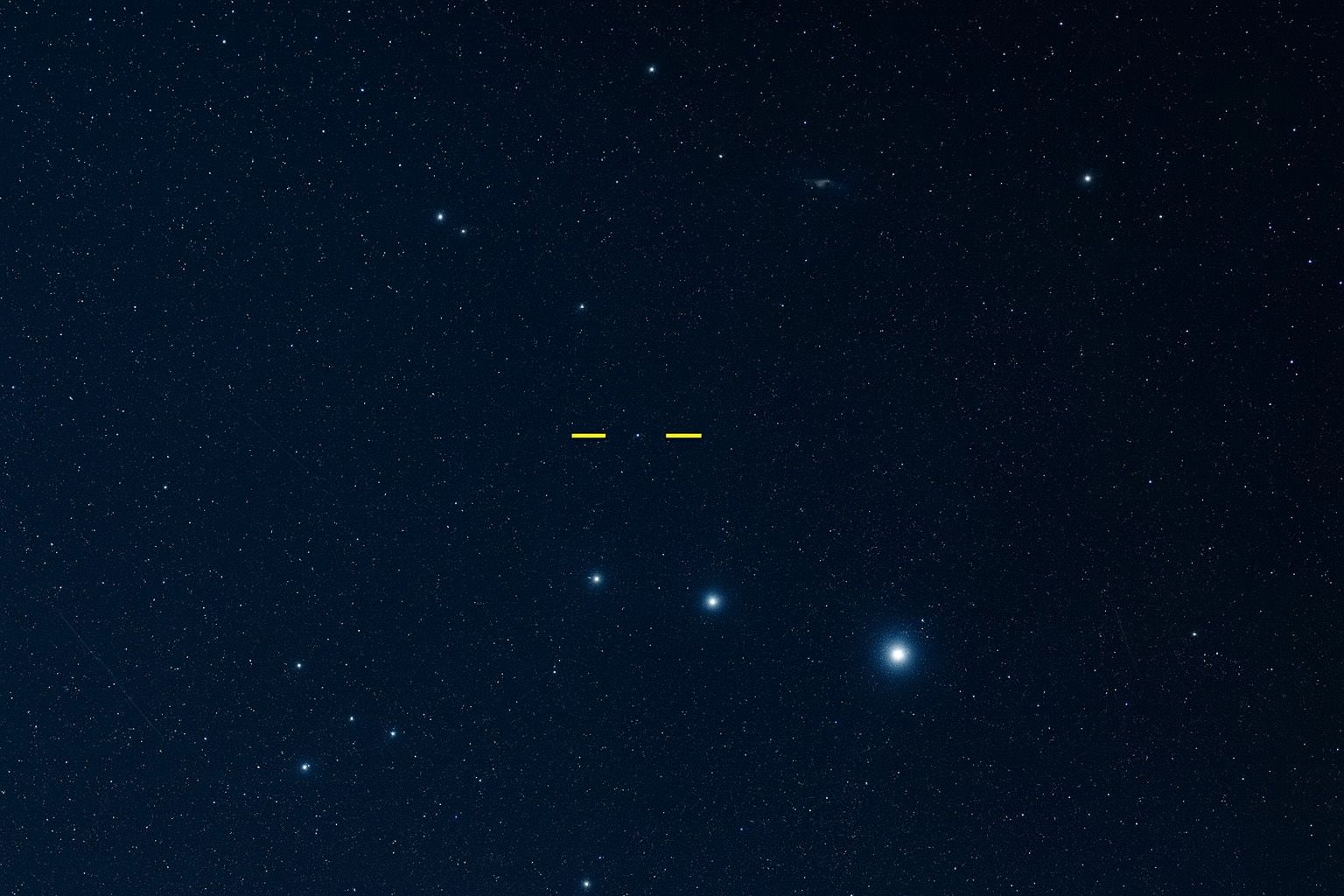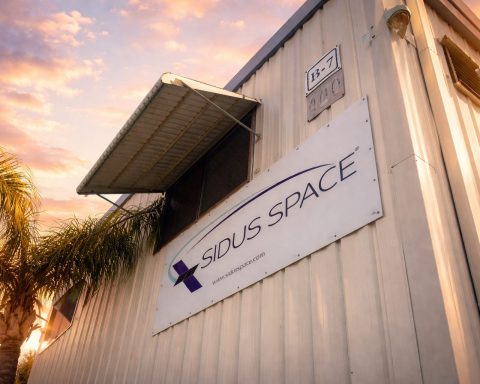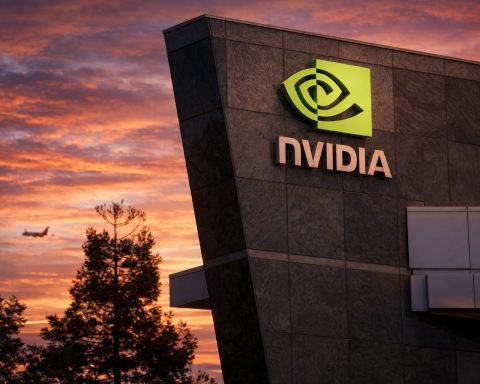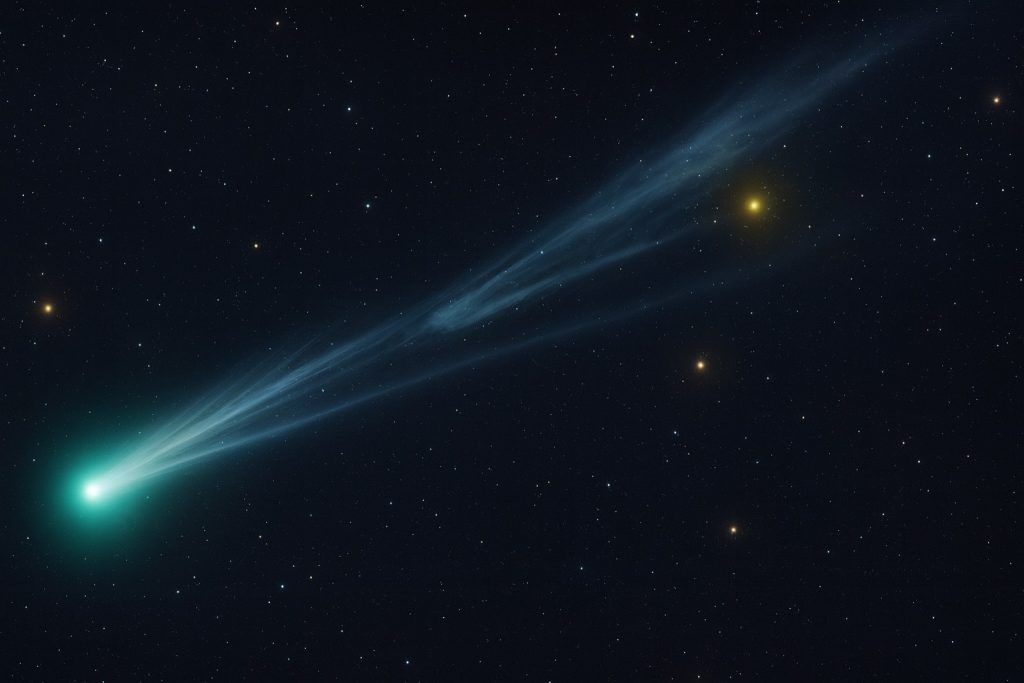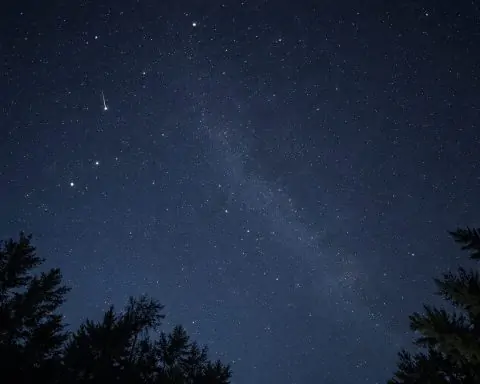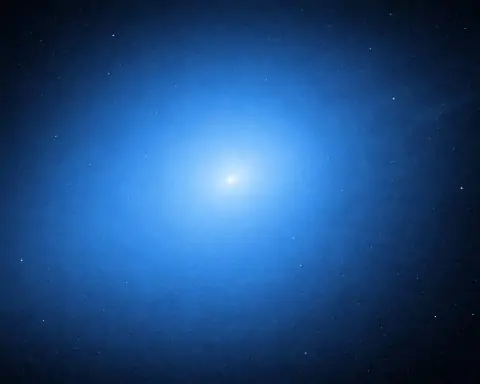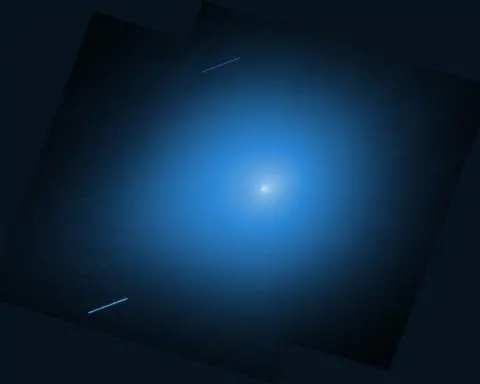- “Twilight” discovery: Astronomers have spotted a 700-meter-wide asteroid lurking in the sun’s glare, designated 2025 SC79, which orbits the sun in just 128 days – the second-fastest asteroid orbit known [1]. It’s only the second asteroid ever found inside Venus’s orbit, highlighting a dangerous blind spot in our detection capabilities [2] [3].
- Skyscraper-sized threat: At roughly 2,300 feet across, about twice the height of the Empire State Building, this skyscraper-size rock qualifies as a potential “planet-killer” – if it ever hit Earth, it could unleash continent-wide devastation [4] [5]. Scientists say an impact by a 700 m asteroid might kill millions or even billions in a worst-case scenario [6].
- Sneaking past our telescopes: 2025 SC79 remained hidden by the sun’s glare until an astronomer caught it during brief twilight observations [7]. Experts warn the most dangerous asteroids are often the hardest to detect – those approaching from the sun’s direction can slip by our night-focused telescopes unnoticed [8].
- No imminent impact: Thankfully, 2025 SC79 is not on a collision course. It will not come near Earth for the foreseeable future, according to orbital calculations [9]. It crosses Mercury’s path but stays well inside Earth’s orbit, so no threat to us right now, astronomers stress.
- Race to plug the gap: The discovery is a wake-up call for planetary defense. NASA is developing the NEO Surveyor space telescope (due to launch by 2027 [10]) to hunt asteroids near the sun’s orbit that ground telescopes can’t easily see [11]. Governments and startups alike are investing heavily in asteroid detection and deflection efforts.
- Investor interest skyrockets: The space sector is booming on news like this. Global space startup funding hit a record $3.5 billion in Q3 2025, and analysts predict momentum into 2026 [12] [13]. Space-related stocks have surged – e.g. Intuitive Machines’ stock jumped 16% after a recent Moon mission success, and experts tout companies like Rocket Lab, Boeing, and Lockheed Martin as promising plays in this growing market [14].
A “Twilight” Asteroid Breaks Speed Records
Astronomers are buzzing about 2025 SC79, a newfound asteroid that’s zipping around the sun at near-record pace. Scott S. Sheppard, an astronomer at Carnegie Science, first spotted the object on September 27 using the Blanco 4-meter telescope in Chile [15] [16]. What he found was astonishing: an asteroid orbiting the sun in just 128 days, making it the second-fastest asteroid ever recorded [17]. Only one known asteroid orbits faster – 2021 PH27, a 1-km rock discovered by Sheppard in 2021 that races around the sun in 113 days [18].
Even Mercury, the innermost planet, takes 88 days for one orbit; asteroids are rarely seen with such short “years.” In fact, 2025 SC79 belongs to an ultra-rare category called Atira asteroids – space rocks that stay entirely inside Earth’s orbit. Scientists have identified only 39 Atira asteroids in total [19], underscoring how uncommon (and hard to find) these objects are. 2025 SC79 is just the second ever found inside Venus’s orbit, a region almost never surveyed due to the sun’s blinding glare [20].
Crucially, 2025 SC79 is huge by asteroid standards. Estimates put its diameter around 700 meters (0.4 miles) [21]. That’s roughly the size of a skyscraper or nearly twice the height of the Eiffel Tower. Any asteroid of that scale earns the ominous label “planet killer” – not literally capable of destroying a planet, but certainly catastrophic for ours if it struck. (By comparison, the asteroid that wiped out the dinosaurs was about 10 km wide, but a 700 m impact could still devastate an entire region or continent [22].) Thankfully, this particular rock isn’t headed our way (more on that below), yet its discovery has scientists on edge.
“Meet 2025 SC79,” Carnegie Science announced in a recent statement, “which has the second-fastest unique asteroid orbit in the Solar System. It orbits the Sun in just 128 days!” [23] [24]. The find showcases Sheppard’s knack for hunting inner solar system objects. He’s made a career of discovering elusive moons and minor planets, and now two record-breaking asteroids as well [25]. Each discovery helps illuminate the extreme dynamics of our solar system’s innermost regions.
Hiding in the Sun’s Glare – A Dangerous Blind Spot
What makes 2025 SC79 especially “sneaky” is where it hides. Most asteroid searches are conducted at night, when telescopes can scan dark skies for faint moving dots. But 2025 SC79 spends its time close to the sun, from our perspective – which means it’s lost in daytime glare most of the time [26]. Astronomers could only catch it during brief twilight periods, just after sunset and before sunrise, when the sun’s light is low enough to not totally wash out the view [27].
This region near the sun has long been a dangerous blind spot for asteroid detection. Scientists have warned that there may be undiscovered “twilight asteroids” lurking in orbits similar to Venus or Mercury, poised at angles that keep them hidden in solar glare [28]. It’s a bit like trying to spot a small moth flying close to a blinding spotlight – our instruments are nearly blind to anything in that direction. Gayoung Lee, writing for Gizmodo, notes that astronomers can usually spot incoming asteroids well in advance, “but what happens if they can’t?” – twilight asteroids present exactly that worrisome scenario [29].
2025 SC79’s discovery highlights this gap. Sheppard had to use the Dark Energy Camera on the Chilean Blanco telescope during special observation windows to find it [30]. Follow-up confirmations came from telescopes in Hawaii and Carnegie’s own Magellan observatory in Chile [31]. It’s only the latest proof that “the most dangerous asteroids are the most difficult to detect,” as Sheppard cautioned [32]. “Most asteroid research finds these objects in the dark of night… But asteroids that lurk near the Sun can only be observed during twilight… If these ‘twilight’ asteroids approach Earth, they could pose serious impact hazards.” [33]
Scientists have good reason to worry. Earth has been blindsided before: in 2013, a ~20 m meteor exploded over Chelyabinsk, Russia with no warning, injuring 1,200 people – it came from the direction of the sun, so no one saw it coming. And in July 2019, a 100 m asteroid named 2019 OKsurprised astronomers by zooming uncomfortably close to Earth (70,000 km) shortly after its discovery, prompting renewed calls for better surveys [34]. These cases underscore that undiscovered asteroids in solar glare are a real threat.
2025 SC79, being orders of magnitude larger than those examples, is precisely the kind of object we want to find decades before any potential encounter – not days or weeks. Yet if it weren’t for Sheppard’s targeted search, this asteroid could have remained invisible for much longer. Evan Gough of Universe Today puts it bluntly: some asteroids “are otherwise hidden in difficult to observe locations” and “unfortunately for life on Earth, some of the most difficult to spot ones are close to us” – lurking in the sun’s glare [35].
The good news is that 2025 SC79 is currently harmless despite its cloak-and-dagger nature. But it serves as a stark reminder that we might not see the next big one coming if it approaches from our blind spot. As Sheppard explained, asteroids can migrate inward from the main asteroid belt due to gravitational nudges (perturbations by planets), ending up in orbits like SC79’s [36]. “Understanding how they arrived at these locations can help us protect our planet and also help us learn more about Solar System history,” he said [37]. In other words, by studying twilight asteroids, we not only safeguard Earth but also uncover clues about the chaotic journeys these space rocks have taken over eons.
Not an Immediate Threat – But a Wake-Up Call
It’s important to emphasize that 2025 SC79 poses no immediate danger to Earth. Orbit models show it never comes particularly close to our planet, at least not in the foreseeable future [38]. Space.com reports that “2025 SC79 will make no close approaches to Earth for the foreseeable future” [39]. The asteroid’s path is well confined to the inner solar system: it loops around inside Venus’s orbit, crossing that of Mercury, but staying tens of millions of miles from Earth’s path [40]. So there’s no doomsday inbound – this discovery is a cause for vigilance, not panic.
Astronomers are actually relieved in a sense: finding a large asteroid before it finds us is exactly the goal of planetary defense surveys. Scott Sheppard and colleagues spotted 2025 SC79 now – well before any hypothetical close pass – which means we can keep tabs on it. In fact, the asteroid has already slipped back out of view, moving behind the sun from Earth’s perspective. It “is now traveling behind the Sun and will be invisible to telescopes for several months,” Carnegie Science noted in its press release [41]. Only once it emerges from the sun’s far side will astronomers get another chance to observe it and refine details like its exact orbit, rotation, and composition.
When that opportunity comes, scientists are eager to learn more. One puzzle is how a 700 m rock survives so close to the sun. The intense solar heat can crack or destabilize smaller asteroids over time. Studying 2025 SC79’s makeup could reveal if it’s a particularly tough rubble pile or perhaps a dense metal-rich body that withstands the heat [42]. Its origin story is another mystery – was it nudged inward from the main asteroid belt between Mars and Jupiter? Or could it be debris from a long-ago collision in the inner solar system? Further observations “will reveal details about its composition … as well as its possible origin,” Carnegie scientists said [43].
While 2025 SC79 itself doesn’t threaten us, experts say its discovery is a sobering wake-up call. “To be fair, there isn’t much we can do about the natural positioning of extraterrestrial objects,” Gizmodo’s report quipped, noting we can’t change where asteroids like to hang out. Still, astronomers hope finding this one will spur better strategies to spot similar objects in the future [44]. It’s a reminder that Earth is surrounded by a swarm of space rocks, many of which we’ve yet to catalog. In just the past few weeks, there have been multiple “close calls” with smaller asteroids that were detected only days or hours ahead of buzzing Earth. For example, on Oct. 15 an asteroid called 2025 TP5 (about 16 m wide) zoomed just 60,000 miles from Earth – only one-quarter the distance to the Moon – after being discovered on Oct. 13, just two days prior [45] [46]. And earlier in October, tiny asteroids 2025 TF and 2025 TQ2 skimmed past Earth at astonishingly close distances (one came just 266 miles above Antarctica!) with little warning [47]. Though those rocks were too small to cause serious harm, they illustrate how last-minute discoveries are becoming routine.
The fact that 2025 SC79 didn’t sneak up on us – despite hiding near the sun – is a success story for our current surveys. But it also underlines the urgent need to expand our search programs to cover the solar glare zone. As astronomer Alan Fitzsimmons once said about near-misses, “The first step in protecting Earth is knowing what’s out there.” With 2025 SC79, we now know about one more lurking giant. How many others remain undetected is an open question.
Stepping Up the Search for Hidden Asteroids
Recognizing the “twilight asteroid” blind spot problem, space agencies are ramping up efforts to find these lurking rocks before they find us. One major initiative is NASA’s Near-Earth Object Surveyor (NEO Surveyor) mission – a dedicated space-based infrared telescope designed to catch asteroids that elude ground-based telescopes. Set to station a telescope at the Sun-Earth L1 Lagrange point (between Earth and the Sun), NEO Surveyor will have a clear view of objects inside Earth’s orbit without glare blocking its sight [48]. Its infrared sensors will pick up the heat of asteroids against the cold of space, rather than relying on visible sunlight, so it can detect even dark, non-reflective asteroids that are practically invisible to optical telescopes [49].
After years of development, NEO Surveyor passed its critical design review in early 2025 and is on track for launch in September 2027 (no later than mid-2028 by current plans) [50]. Once in operation, this mission is expected to find the vast majority of large near-Earth asteroids within a decade, including those in the inner solar system. By NASA’s estimates, NEO Surveyor should discover two hundred thousand or more new asteroids, including most objects over 140 m that could pose serious threats [51]. Essentially, it aims to fill the gap that allows asteroids like 2025 SC79 to go unnoticed. “It will play a central role in discovering asteroid threats hiding in sunlight,” notes Modern Engineering Marvels, because a space infrared surveyor can “detect asteroids independently of their reflected sunlight.” [52]
Beyond detection, there’s also the question of planetary defense – what if we do find an asteroid on a collision course? Fortunately, humanity has made progress here as well. In 2022, NASA’s DART mission successfully smacked an asteroid (Dimorphos) off its course as a test, marking the first-ever intentional deflection of a celestial object. That dramatic experiment proved that given enough lead time, we can potentially nudge a threatening asteroid away from Earth. Now space agencies are planning follow-up missions (like Europe’s Hera probe to examine DART’s impact site) and studying other deflection techniques (such as gravity tractors or even nuclear options for larger asteroids). The key takeaway: finding asteroids early gives us a chance to prevent a cosmic disaster – but without early detection, even the best deflection technology is useless.
Lawmakers are taking note too. The U.S. Congress has mandated NASA to identify 90% of near-Earth asteroids over 140 m in size (roughly city-destroyer size) as soon as possible [53]. While that 2020 goal wasn’t met, funding has since been boosted, and missions like NEO Surveyor are now funded under NASA’s planetary defense program (after years of delays) [54]. The discovery of 2025 SC79 provides a tangible example officials can point to when justifying these investments: here is a planetary-scale threat we didn’t know about until now, lurking in a place we barely look. It bolsters the argument for why we need space-based eyes on the sky.
As Richard Moissl, the European Space Agency’s head of planetary defense, often points out, the question isn’t if we will find all the large asteroids – it’s when, and whether we’ll find them in time. The combination of improved ground surveys and upcoming space telescopes means that “sooner or later, we’ll catch virtually all of them,” Moissl has said. The goal is to do it sooner, before any unwelcome surprise drops by.
Space Stocks Soar on Asteroid Alert and Exploration Hype
It’s not just scientists and governments responding to these developments – investors are paying close attention too. The burgeoning field of “NewSpace” (commercial space ventures) and planetary defense has become a hot topic on Wall Street and beyond. In fact, space exploration and defense is now big business, with billions of dollars flowing into space startups and companies in 2025. The discovery of a high-speed “planet-killer” asteroid underscores the importance of this sector, and the markets have taken notice.
Recent reports show that global investment in space startups hit a record high in the latest quarter. According to a Seraphim Space report, venture capital poured $3.5 billion into space companies in Q3 2025, nearly double the figure from a year prior [55]. “What we’re seeing now is a far more diverse set of investable companies, signaling that space has evolved into a broader, more mature market,” said Lucas Bishop, an associate at Seraphim Space, noting that funding is no longer concentrated in just Elon Musk’s SpaceX or a few giants [56]. Instead, money is spreading across niches like launch providers, satellite networks, and yes, asteroid detection and protection technologies. This surge “solidifies space as a leading growth sector in technology alongside AI,” Reuters reported, and momentum is expected to carry into 2026 [57] [58].
Investors appear to recognize that planetary defense and space exploration aren’t just science fiction – they’re emerging industries. A clear example came in mid-October, when Intuitive Machines (NASDAQ:LUNR) – a company developing lunar landers and infrastructure – saw its stock jump 16% in a single day amid excitement over a successful Moon mission and NASA’s Artemis program [59]. Similarly, Rocket Lab (NASDAQ:RKLB), a small launch vehicle builder that also works on orbital debris removal and potentially asteroid missions, has seen its share price climb sharply this year; Rocket Lab’s market value has more than doubled in 2025 as the company secures government and commercial contracts [60].
Even the old-guard aerospace companies are getting a boost. Lockheed Martin (NYSE:LMT) and Boeing (NYSE:BA) – both major NASA contractors – are frequently cited by analysts as beneficiaries of increased space and defense spending [61]. Lockheed, for instance, builds planetary spacecraft (it’s behind NASA’s OSIRIS-REx asteroid sample return mission and upcoming asteroid-hunter craft), while Boeing is a prime contractor for heavy rockets and space stations. As asteroid detection and mitigation efforts ramp up, these giants are positioning to win contracts and partnerships in the new space economy. Market watchers have flagged such space-related stocks as “promising” picks, especially with high-profile asteroid missions and planetary defense tests making headlines [62].
The broader stock market is also reflecting the public’s fascination and concern with space threats. Whenever there’s an attention-grabbing asteroid story – like a close flyby or a discovery of something like 2025 SC79 – it often coincides with a bump in social media chatter about space stocks, or even short-term trading volume in those companies. While one asteroid discovery won’t fundamentally change a company’s earnings, it does raise awareness (and perhaps government urgency) about the field. That, in turn, can lead to increased funding for missions (benefiting contractors) and more capital for space startups via IPOs or SPAC deals.
In 2025 alone, we’ve seen multiple space startups go public or announce plans to, riding the wave of investor enthusiasm. The space economy’s annual value is now estimated at $500+ billion, and growing at a healthy clip. Planetary defense – once a niche topic – is now part of the conversation. As Seraphim Space noted, investments are flowing not just for satellites and rockets, but into areas like “dual-use” space tech that serves civilian and military goals [63]. Detecting or deflecting asteroids could certainly fall under that dual-use umbrella (protecting the planet is as fundamental as it gets).
All of this means that the discovery of 2025 SC79 comes at a time of rapid progress and optimism in the space sector. The public is captivated by dramatic space stories, from NASA’s successful asteroid deflection last year to the surprise of a skyscraper-sized asteroid hiding next to the sun this year. That interest translates into political will and financial backing. We are essentially entering a new era of Space Age vigilance, where spotting a hazardous asteroid garners not just scientific accolades but also investor applause.
As we marvel at 2025 SC79 – a cosmic speed demon that eluded us until now – it’s clear that our ability to find and face cosmic threats is better than ever, yet still has room to improve. Experts are adamant that we use this time wisely. “This finding… highlights the potential dangers of unseen asteroids,” wrote Live Science of Sheppard’s discovery [64]. The consensus: we got lucky with this one being harmless. Next time, we might not be so lucky unless we broaden our gaze.
“The most dangerous asteroids are the most difficult to detect… If these ‘twilight’ asteroids approach Earth, they could pose serious impact hazards.” – Dr. Scott Sheppard, Carnegie Science [65]
Fortunately, humanity is waking up to the challenge – from advanced telescopes soon watching our backs (or rather, our sun-blinded front), to energetic entrepreneurs turning planetary protection into the next investment frontier. Asteroids may be sneaky, but we’re getting smarter and richer in outsmarting them. The next time a “sneaky” space rock comes wandering our way, we just might see it in time – and perhaps even have the tools to nudge it harmlessly aside. Until then, 2025 SC79 serves as a celestial reminder that even in daylight, we must keep our eyes on the skies.
Sources: Carnegie Science [66] [67]; Gizmodo [68] [69]; Fox News [70] [71]; Space.com [72] [73]; Universe Today [74] [75]; Live Science [76]; TechStartups/Reuters [77] [78]; TS2 Tech [79].
References
1. www.space.com, 2. carnegiescience.edu, 3. gizmodo.com, 4. gizmodo.com, 5. www.universetoday.com, 6. www.universetoday.com, 7. gizmodo.com, 8. carnegiescience.edu, 9. www.space.com, 10. en.wikipedia.org, 11. en.wikipedia.org, 12. techstartups.com, 13. techstartups.com, 14. ts2.tech, 15. carnegiescience.edu, 16. carnegiescience.edu, 17. www.space.com, 18. www.livescience.com, 19. www.universetoday.com, 20. carnegiescience.edu, 21. www.space.com, 22. www.universetoday.com, 23. carnegiescience.edu, 24. carnegiescience.edu, 25. www.space.com, 26. gizmodo.com, 27. gizmodo.com, 28. gizmodo.com, 29. gizmodo.com, 30. carnegiescience.edu, 31. www.space.com, 32. carnegiescience.edu, 33. carnegiescience.edu, 34. en.wikipedia.org, 35. www.universetoday.com, 36. carnegiescience.edu, 37. carnegiescience.edu, 38. www.space.com, 39. www.space.com, 40. www.foxnews.com, 41. carnegiescience.edu, 42. carnegiescience.edu, 43. carnegiescience.edu, 44. gizmodo.com, 45. ts2.tech, 46. ts2.tech, 47. ts2.tech, 48. en.wikipedia.org, 49. en.wikipedia.org, 50. en.wikipedia.org, 51. en.wikipedia.org, 52. modernengineeringmarvels.com, 53. en.wikipedia.org, 54. en.wikipedia.org, 55. techstartups.com, 56. techstartups.com, 57. techstartups.com, 58. techstartups.com, 59. ts2.tech, 60. techstartups.com, 61. ts2.tech, 62. ts2.tech, 63. techstartups.com, 64. www.livescience.com, 65. carnegiescience.edu, 66. carnegiescience.edu, 67. carnegiescience.edu, 68. gizmodo.com, 69. gizmodo.com, 70. www.foxnews.com, 71. www.foxnews.com, 72. www.space.com, 73. www.space.com, 74. www.universetoday.com, 75. www.universetoday.com, 76. www.livescience.com, 77. techstartups.com, 78. techstartups.com, 79. ts2.tech
